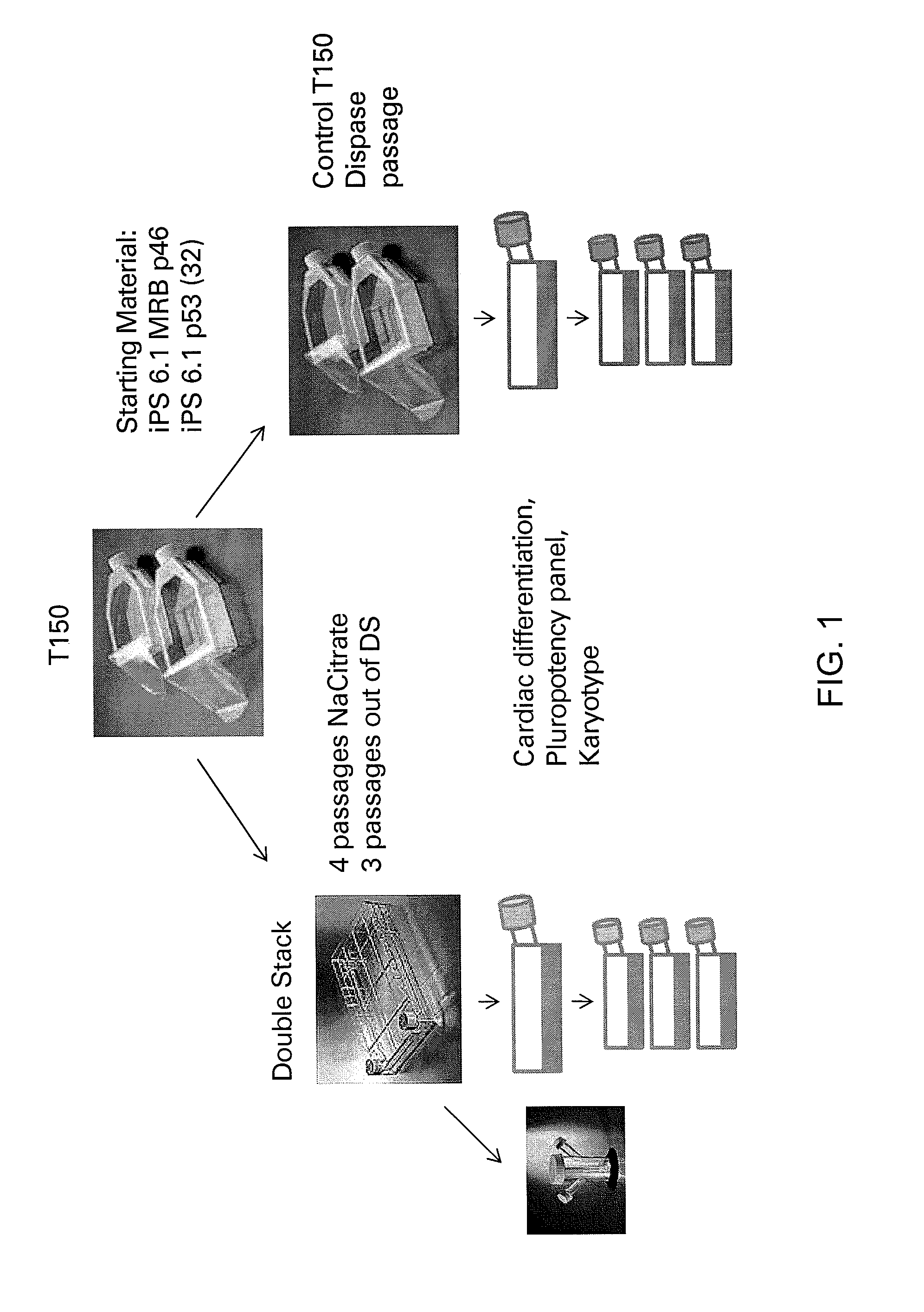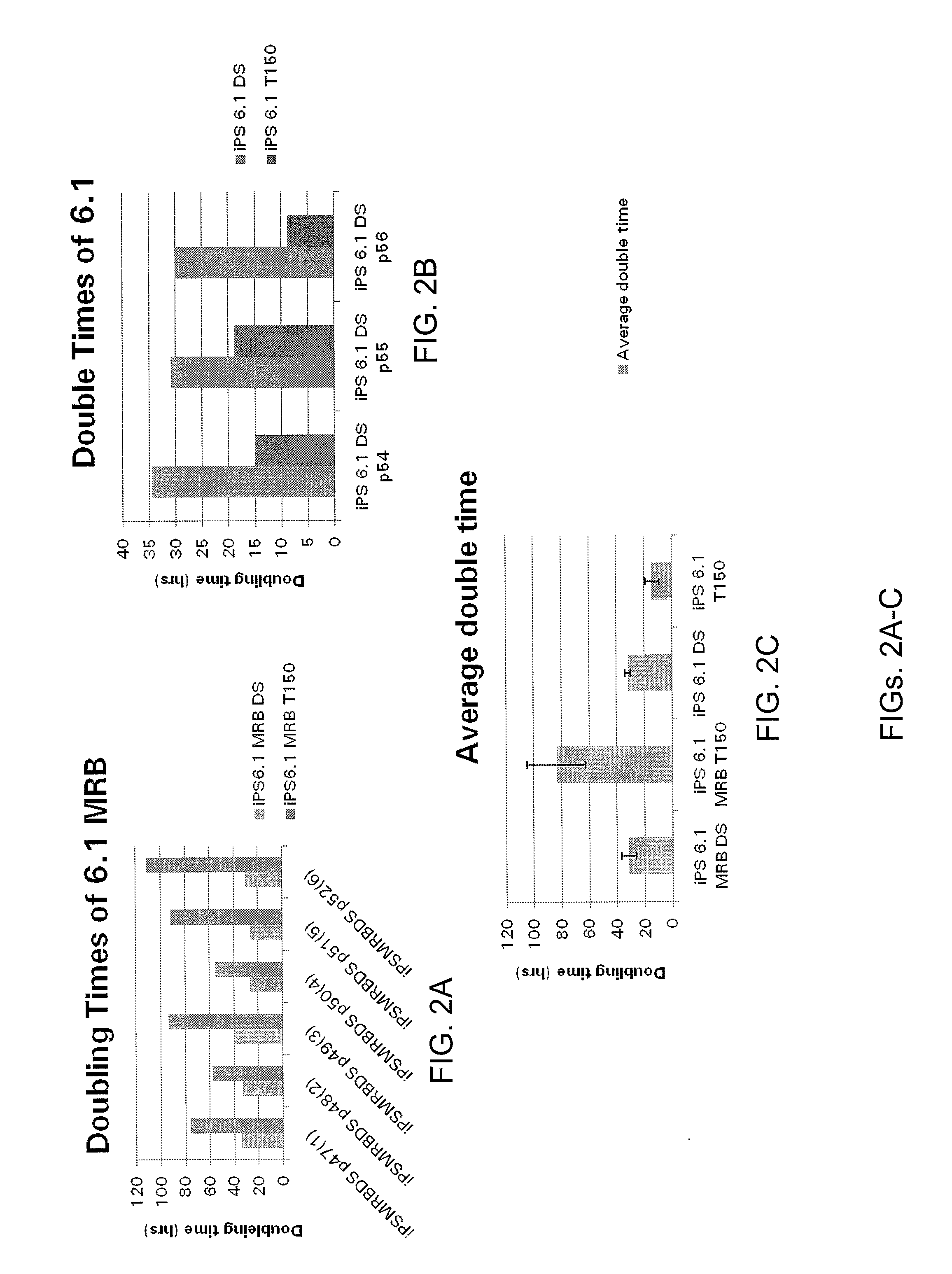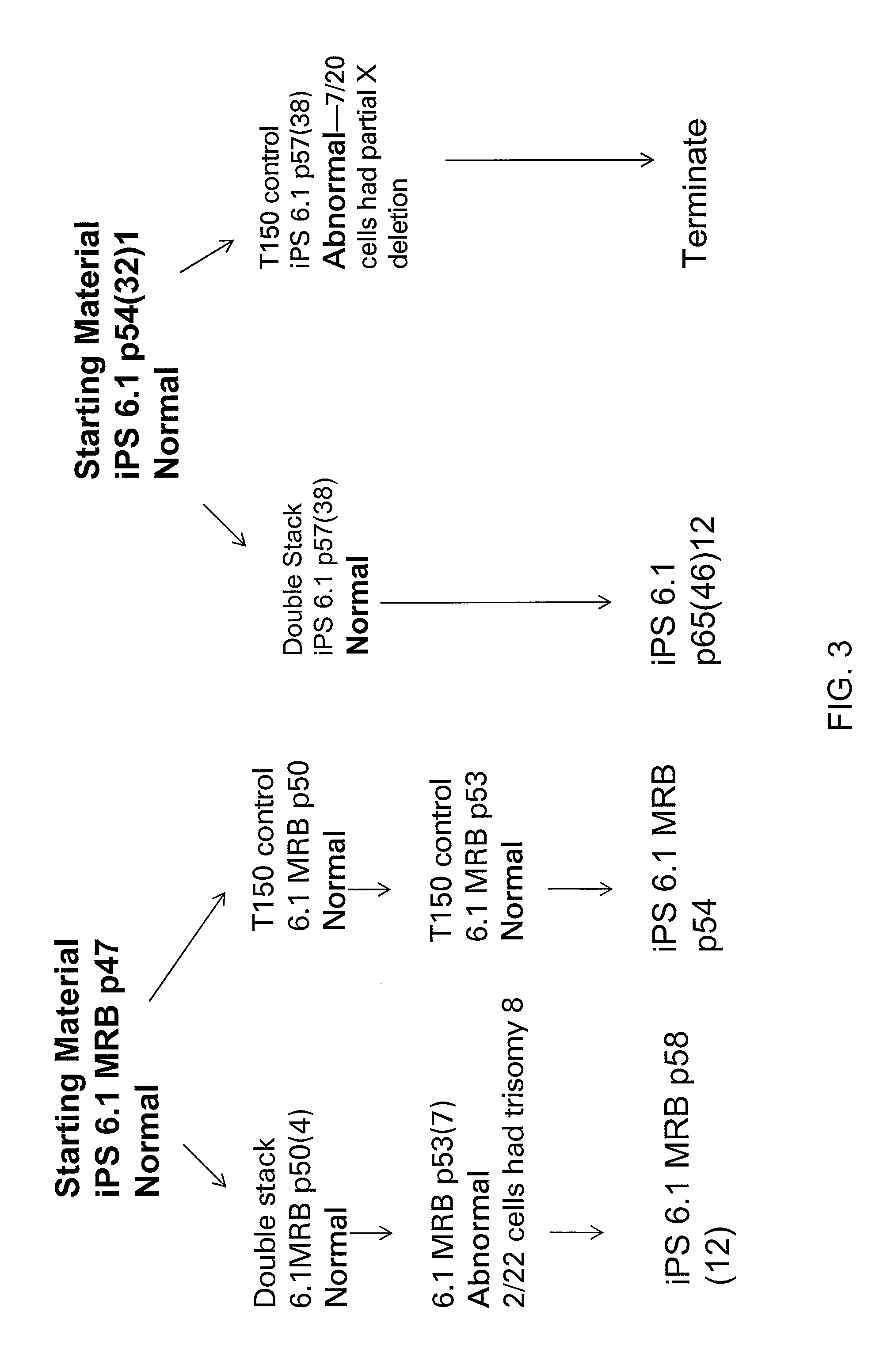Cardiomyocyte production
a technology of cardiomyocytes and stem cells, applied in the field of stem cell development, can solve problems such as unpredictability in cell lineage differentiation, and achieve the effect of large-scale and high efficiency
- Summary
- Abstract
- Description
- Claims
- Application Information
AI Technical Summary
Benefits of technology
Problems solved by technology
Method used
Image
Examples
example 1
Single Cell Splitting for Automation
[0255]IPS cells were maintained on Matrigel™ in TeSR medium (from Stem Cell Technologies) in 6-well plates. After the media were aspirated, 1 ml / well of 0.05% Trypsin was added and the cells were incubated at 37° C. for 7 minutes. Equal volume of A1 media (TeSR media containing 1 μM H-1152 (or HA-100) (EMD), 0.5 mg / ml Soybean Trypsin inhibitor (Invitrogen)) were added to the cells. Then the cells were seeded into Matrigel™-coated vessels containing the A1 media and fed every 24 hours with TeSR media.
example 2
Single Human IPS Cell Passaging with NaCitrate
[0256]Dissociated iPS cells were rinsed with D-PBS (Dulbecco's Phosphate Buffered Saline) free of Ca2+ and Mg2+ and the media were aspirated. The cells were then incubated with appropriate amount (i.e., 1 mL for one well of 6-well plate, 15 mL for T-150 flask, etc) of 15 mM NaCitrate, 165 mM KCl, pH 7.3, OSM 340, at room temperature for 6-15 minutes. After incubation, the NaCitrate solution were aspirated with the cells still loosely attached. The cells were resuspended in appropriate amount of TeSR with 1 μM H1152 and distributed to Matrigel™ surfaced vessel.
[0257]For scale up production of the starting material from T150 flasks to Corning Double Stacks, and for assessment of the ability of iPS cells to be passaged as single cells / small clumps with NaCitrate, iPS 6.1 and iPS 6.1 MRB were passaged with 15 mM NaCitrate as single cells or small cell clumps into double stacks while maintaining T150 control flasks split with dispase (see FIG...
example 3
Induction of IPS Cells into Cardiomyocytes Via Suspension Aggregates in a 1 L, Spinner Flask
[0260]Human pluripotent stem cells were maintained and expanded on Matrigel™ in TeSR medium into cardiomyocytes via suspension aggregates in a 1 L spinner flask as in the following experiments.
[0261]IPS-MRB cells were maintained on Matrigel™ in TeSR medium (from Stem Cell Technologies) no later than when they would normally be ready to be passaged. IPS cells were grown in T-150 flasks throughout this example, but can be scaled for starting cells in other culture formats. Five T-150 flasks of iPS cells were harvested: media were aspirated and cells were incubated with 12 mL room temperature TrypLe™ (Invitrogen), a recombinant typsin-like enzyme, at 37° C. for 7 minutes. The cells were then transferred to five 50 ml conical tubes (one tube for each T-150 flask) containing 12 ml DMEM / F12 (GIBCO) with 10% fetal calf serum (FCS) (Chemicon). The cells were then pelleted at 1200 rpm for 5 minutes an...
PUM
| Property | Measurement | Unit |
|---|---|---|
| diameter | aaaaa | aaaaa |
| volume | aaaaa | aaaaa |
| volume | aaaaa | aaaaa |
Abstract
Description
Claims
Application Information
 Login to View More
Login to View More - R&D
- Intellectual Property
- Life Sciences
- Materials
- Tech Scout
- Unparalleled Data Quality
- Higher Quality Content
- 60% Fewer Hallucinations
Browse by: Latest US Patents, China's latest patents, Technical Efficacy Thesaurus, Application Domain, Technology Topic, Popular Technical Reports.
© 2025 PatSnap. All rights reserved.Legal|Privacy policy|Modern Slavery Act Transparency Statement|Sitemap|About US| Contact US: help@patsnap.com



